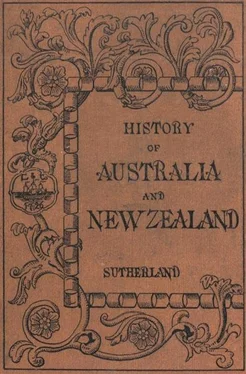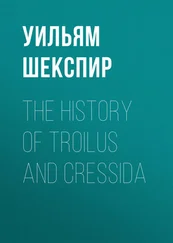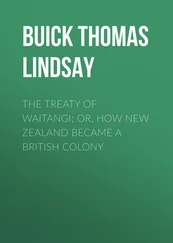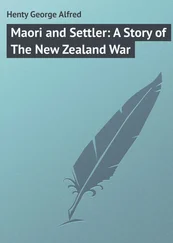In 1848 Kennedy was sent to explore Cape York Peninsula. He was landed with a party of twelve men at Rockingham Bay, and, striking inland to the north-west, travelled towards Cape York, where a small schooner was to wait for him. The difficulties met by the explorers were immense; for, in these tropical regions, dense jungles of prickly shrubs impeded their course and lacerated their flesh, while vast swamps often made their journey tedious and unexpectedly long. Thinking there was no necessity for all to endure these hardships, he left eight of his companions at Weymouth Bay, intending to call for them on his way back in the schooner. He was courageously pushing through the jungle towards the north with three men and his black servant Jackey, when one of the party accidentally received a severe gunshot wound, which made it impossible for him to proceed. Kennedy was now only a few miles distant from Cape York; and, leaving the wounded man under the care of the two remaining whites, he started—accompanied by Jackey—to reach the cape and obtain assistance from the schooner. They had not gone far, and were on the banks of the Escape River, when they perceived that their steps were being closely followed by a tribe of natives, whose swarthy bodies, from time to time, appeared among the trees. Kennedy now proceeded warily, keeping watch all around; but a spear, urged by an unseen hand from among the leaves, suddenly pierced his body from behind, and he fell. The blacks rushed forward, but Jackey fired, and at the report they hastily fled. Jackey held up his master’s head for a short time, weeping bitterly. Kennedy knew he was dying, and he gave his faithful servant instructions as to the papers he was to carry, and the course he must follow. Not long after this he breathed his last, and Jackey, with his tomahawk, dug a shallow grave for him in the forest. He spread his coat and shirt in the hollow, laid the body tenderly upon them, and covered it with leaves and branches. Then, packing up the journals, he plunged into the creek, along which he walked, with only his head above the surface, until he neared the shore. Hastily making for the north, he reached the cape, where he was taken on board the schooner. This expedition was one of the most disastrous of the inland explorations. The wounded man, and the two who had been left with him, were never afterwards heard of—in all probability they were slaughtered by the natives; whilst the party of eight, who had been left at Weymouth Bay, after constant struggles with the natives, had been reduced, by starvation and disease, to only two ere the expected relief arrived.
11. Gregory.—In 1856 A. C. Gregory went in search of Leichardt, and, thinking he might possibly have reached the north-west coast, took a small party to Cambridge Gulf. Travelling along the banks of the Victoria River, he crossed a low range of hills and discovered a stream, to which he gave the name of “Sturt Creek”. By following this, he was led into a region covered with long ridges of glaring red sand, resembling those which had baffled Captain Sturt, except that in this desert there grew the scattered blades of the spinifex grass, which cut like daggers into the hoofs of the horses. The creek was lost in marshes and salt lakes, and Gregory was forced to retrace his steps till he reached the great bend in the Victoria River; then, striking to the east, he skirted the Gulf of Carpentaria about fifty miles from the shore; and, after a long journey, arrived at Moreton Bay, but without any news regarding Leichardt and his party. His expedition, however, had explored a great extent of country, and had mapped out the courses of two large rivers—the Victoria and the Roper.
CHAPTER XVIII.
DISCOVERIES IN THE INTERIOR, 1860-1886.
1. Burke and Wills.—In the year 1860 a merchant of Melbourne offered £1,000 for the furtherance of discovery in Australia; the Royal Society of Victoria undertook to organise an expedition for the purpose of crossing the continent, and collected subscriptions to the amount of £3,400; the Victorian Government voted £6,000, and spent an additional sum of £3,000 in bringing twenty-six camels from Arabia. Under an energetic committee of the Royal Society, the most complete arrangements were made. Robert O’Hara Burke was chosen as leader; Landells was second in command, with special charge of the camels, for which three Hindoo drivers were also provided; W. J. Wills, an accomplished young astronomer, was sent to take charge of the costly instruments and make all the scientific observations. There were two other scientific men and eleven subordinates, with twenty-eight horses to assist in transporting the baggage. On the 20th August, 1860, the long train of laden camels and horses set out from the Royal Park of Melbourne, Burke heading the procession on a little grey horse. The mayor made a short speech, wishing him God-speed; the explorers shook hands with their friends, and, amid the ringing cheers of thousands of spectators, the long and picturesque line moved forward.
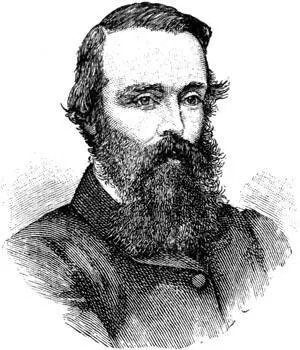
Robert O’Hara Burke.
The journey, as far as the Murrumbidgee, lay through settled country, and was without incident; but, on the banks of that river, quarrelling began among the party, and Burke dismissed the foreman; Landells then resigned, and Wills was promoted to be second in command. Burke committed a great error in his choice of a man to take charge of the camels in place of Landells. On a sheep station he met with a man named Wright, who made himself very agreeable; the two were soon great friends, and Burke, whose generosity was unchecked by any prudence, gave to this utterly unqualified person an important charge in the expedition.
On leaving the Murrumbidgee they ascended the Darling, till they reached Menindie—the place from which Sturt had set out sixteen years before. Here Burke left Wright with half the expedition, intending himself to push on rapidly, and to be followed up more leisurely by Wright.
Burke and Wills, with six men and half the camels and horses, set off through a very miserable country—not altogether barren, but covered with a kind of pea, which poisoned the horses. A rapid journey brought them to the banks of Cooper’s Creek, where they found fine pastures and plenty of water. Here they formed a depôt and lived for some time, waiting for Wright, who, however, did not appear. The horses and camels, by this rest, improved greatly in condition, and the party were in capital quarters. But Burke grew tired of waiting, and, as he was now near the centre of Australia, he determined to make a bold dash across to the Gulf of Carpentaria. He left one of his men, called Brahe, and three assistants, with six camels and twelve horses, giving them instructions to remain for three months; and if within that time he did not return, they might consider him lost, and would then be at liberty to return to Menindie. On the 16th December Burke and Wills, along with two men, named King and Gray, started on their perilous journey, taking with them six camels and one horse, which carried provisions to last for three months.
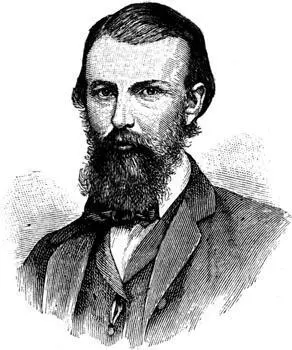
William John Wills.
2. Rapid Journey to Gulf of Carpentaria.—They followed the broad current of Cooper’s Creek for some distance, and then struck off to the north, till they reached a stream, which they called Eyre Creek. From this they obtained abundant supplies of water, and, therefore, kept along its banks till it turned to the eastward; then abandoning it, they marched due north, keeping along the 140th meridian, through forests of boxwood, alternating with plains well watered and richly covered with grass. Six weeks after leaving Cooper’s Creek they came upon a fine stream, flowing north, to which they gave the name “Cloncurry,” and, by following its course, they found that it entered a large river, on whose banks they were delighted to perceive the most luxuriant vegetation and frequent clusters of palm trees. They felt certain that its waters flowed into the Gulf of Carpentaria, and therefore, by keeping close to it, they had nothing to fear. But they had brought only three months’ provisions with them; more than half of that time had now elapsed, and they were still 150 miles from the sea. Burke now lost no time, but hurried on so fast that, one after another, the camels sank exhausted; and, when they had all succumbed, Burke and Wills took their only horse to carry a small quantity of provisions, and, leaving Gray and King behind, set out by themselves on foot. They had to cross several patches of swampy ground; and the horse, becoming inextricably bogged, was unable to go farther. But still Burke and Wills hurried on by themselves till they reached a narrow inlet on the Gulf of Carpentaria, and found that the river they had been following was the Flinders, whose mouth had been discovered by Captain Stokes in 1842. They were very anxious to view the open sea; but this would have required another couple of days, and their provisions were already exhausted; they were, therefore, obliged to hasten back as quickly as possible. The pangs of hunger overtook them before they could reach the place where King and Gray had remained with the provisions. Burke killed a snake, and ate a part of it, but he felt very ill immediately after; and when, at length, they reached the provisions, he was not able to go forward so quickly as it was necessary to do, if they wished to be safe. However, they recovered the horse and camels, which had been greatly refreshed by their rest; and, by taking easy stages, they managed to move south towards home. But their hurried journey to the north, in which they had traversed, beneath a tropical sun, about 140 miles every week, had told severely on their constitutions; Gray became ill, and it was now necessary to be so careful with the provisions that he had little chance of regaining his lost strength. One evening, after they had come to a halt, he was found sitting behind a tree, eating a little mixture he had made for himself of flour and water. Burke said he was stealing the provisions, fell upon him, and gave him a severe thrashing. He seems after this never to have rallied; whilst the party moved forward he was slowly sinking. Towards the end of March their provisions began to fail; they killed a camel, dried its flesh, and then went forward. At the beginning of April this was gone, and they killed their horse. Gray now lay down, saying he could not go on; Burke said he was “shamming,” and left him. However, the gentler counsel of Wills prevailed; they returned and brought him forward. But he could only go a little farther; the poor fellow breathed his last a day or two after, and was buried in the wilderness. Burke now regretted his harshness, all the more as he himself was quickly sinking. All three, indeed, were utterly worn out; they were thin and haggard, and so weak that they tottered rather than walked along. The last few miles were very, very weary; but, at last, on the 21st of April, they came in sight of the depôt, four months and a half after leaving it. Great was their alarm on seeing no sign of people about the place; and, as they staggered forward to the spot at sunset, their hearts sank within them when they saw a notice, stating that Brahe had left that very morning. He would be then only seven hours’ march away. The three men looked at one another in blank dismay; but they were so worn out that they could not possibly move forward with any hope of overtaking the fresh camels of Brahe’s party. On looking round, however, they saw the word “dig” cut on a neighbouring tree; and, when they turned up the soil, they found a small supply of provisions.
Читать дальше
